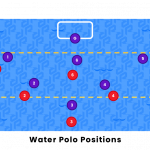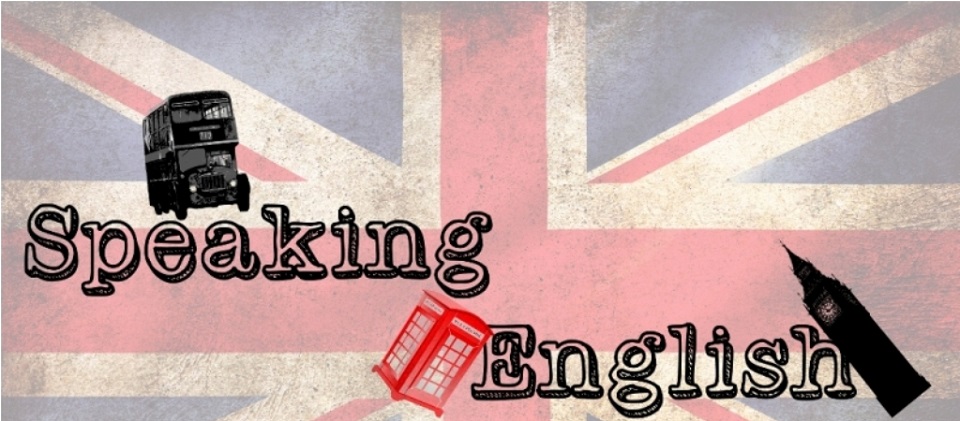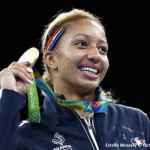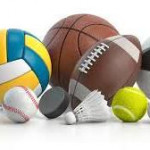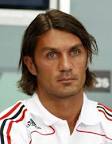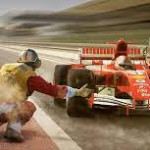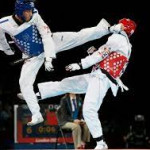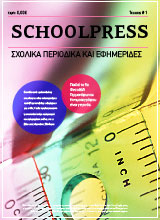By: Ioannis Kolokithas
and Haris Economopoulos
The Beginning Of Water Polo:
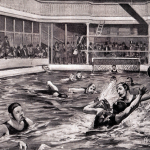
The history of water-polo extends back to the Victorian English Society, as a by-product of the industrial revolution and love of sport. In the mid of the 1870’s, the English were moving in towns due to the rapid industrialization, while the construction of baths allowed them “to get washed” and “to learn swimming”. This new game was called “football in the water”. The origins of water polo are obscure to say the least but we do know that the word “polo” is the English pronunciation of the Indian word “pulu,” that means ball. Just as the ball game that is played on horseback became known as “polo,” the ball game played in the water became known as “water polo,” the name is the only connection between the sports. The game of water polo was first played in the United States in 1888. It featured the old rugby style of play which looked like American football in the water. “American style” water polo became very popular and by the late 1890’s was played in such places as Madison Square Garden and Boston’s Mechanics Hall, attracting 14,000 spectators to the big national championship games.
The Evolution Of Water Polo:
It is believed that British holiday resort owners invented this rather strange pastime during the mid-1800s, in an attempt to attract guests. The first games were played on nearby rivers and lakes, and the game’s passing similarity to horseback polo gave it the name “water polo.”
By 1869, a rubber ball had began to replace the original ball which was made from a pig’s stomach. In 1870 the London Swimming Club formulated rules for the sport and hosted the first official game at the Crystal Palace Plunge in London. Games resembled rugby on the water, and were based more on brute strength than athletic skill. Underwater wrestling would leave some players barely conscious when they managed to get to the surface.
A common ploy players used was to place the small ball in their swimming trunks and swim underwater towards the goal, where they would score by removing the ball and slamming it onto the pool deck.
In 1880, rules were introduced in Scotland to shift the game’s focus to skill over force. A bigger ball, similar to a soccer ball, was used, nets were introduced and players could no longer tackle opponents who did not have possession of the ball. The same rules still apply to today’s game.
The game that evolved into contemporary water polo started off as an adaptation of rugby played in lakes and rivers; the object of the game was to “carry” the ball to the opponent’s side.
The Scottish rules were adopted throughout Great Britain, and the game quickly caught on in countries like Hungary, Belgium, Germany, Austria and France, which began playing the sport in the late 1800s.
In 1888, Water polo was introduced into the United States by English swimming instructor John Robinson. The game featured the old rugby style of play which was much like gridiron football in the water. “American style” water polo became very popular and by the late 1890’s was played in such venues as the Boston’s Mechanics Hall and Madison Square Garden.
The game of the day featured set plays like the “flying salmon,” where the player with the ball leapt through the air from the backs of his teammates to score a goal. Violence was the game’s main attraction.
As the sport grew in popularity, so did its level of violence, with little rules to prevent it. In the 1800’s the intent of the game was to place the ball with two hands against the wall at one end of the pool to score. Players often swam underwater in an attempt to gain an advantage, only to be attacked by their defenders in the same manner.
In addition to the aggressive play, many of the pools and lakes in which it was played were often poorly filtered and very murky, creating even more mystery regarding the actions that took place beneath the surface. It was not uncommon for players to be dragged from the water unconscious. This may have added to the popularity, with crowds as many as 14,000 attending some games in New York City. In fact, its popularity was so great it was named the first Olympic team sport in 1900. Interestingly enough, women’s water polo was the last Olympic team sport to be added in 2000.
Meanwhile, the rest of the world adopted the Scottish rules: Hungary in 1889, Belgium in 1900, Austria and Germany in 1894 and France in 1895. By 1900, water polo was so popular it became the first team sport added to the Olympic Games program and has remained an Olympic sport ever since. Great Britain won gold at each of the first four Olympic Games.
In 1911, the Federation International de Natation Amateur (FINA), the international governing body for all amateur water sports, adopted the Scottish rules for all international water polo events.
United States continued to play by their own rules until 1912, when, instead of playing their semi-final game in the National Championship tournament, the New York Athletic Club and the Chicago Athletic Association chose to fight instead. The Amateur Athletic Union (AAU) cancelled its sponsorship of water polo until 1914 when United States clubs finally agreed to play under the more civilized international rules.
Over the years the game has evolved to more of a soccer style in which an opponent could only make contact if a player held the ball. In addition, the evolution of swimming changed the game from brute strength underwater to one of passing and speed above the surface.
Women were not allowed to compete at the Olympics until the 2000 Games in Sydney, where Australia won the gold medal, the United States took the silver, and the bronze went to Russia. The first Water Polo World Cup for women was held by FINA (the sport’s governing body) in 1979, and the first World Championships took place in 1986.
The most notorious incident in the history of Olympic water polo took place during the 1956 match between the Soviet Union and Hungary. Four weeks prior to the Games, 200,000 Soviet troops invaded Hungary to suppress an anti-Communist uprising, so there was plenty of bad blood between the two sides before the scrappy game started.
The game was marred by brawls and became so brutal that officials called it off altogether. Hungary was leading 4-0 at the time and was declared the winner; the team advanced to the finals and won the gold.
Hungary has also fielded some of the most celebrated water polo players of all time. Dezso Gyarmati won a medal at five different Olympics from 1948-1964 (3 gold, 1 silver and 1 bronze). Oliver Halassy, who represented Hungary three times between 1928-1936, won 2 gold and 1 silver. What makes his medal count even more extraordinary is that Halassy had one of his legs amputated below the knee as a child.
Hungarians are well-known for their extraordinary play in the water. Hungary has won the most medals in Olympic water polo history, with a total of thirteen, including 7 gold, four of them coming between 1932-1956. Like other notable southern European nations, such as Italy, Spain and Yugoslavia, its national team draws its players from a pool of talent that plays in the professional leagues.
Water polo within the United States was adopted as a championship sport for men in the collegiate system in the early 70’s, while women were added about 30 years later as participation grew. Today, collegiate and high school teams can be found throughout the country.
Internationally the game is played all over the world, with Europe and Asia boasting the world’s strongest programs for men. The USA is the only non-European team to win Olympic medals. In addition to the gold won by the New York Athletic Club in 1904, the United States men’s program won silver medals in 1984 and 1988 and bronze medals in 1924, 1932 and 1972.

Rules:
General rules of water polo
- Water polo players in possession of the ball can pass the ball forwards, sideways or backwards.
- Water polo players must tread water and are not allowed to touch the bottom of the pool – with the exception of the goalkeeper.
- The ball can be advanced by passing with one hand or swimming with the head above the water and the ball between the arms so that it rides on the wave created by the swimmer (which is called ‘dribbling’).
- The ball can only be handled by one hand at a time in water polo – with the exception of the goalkeeper, who can use both hands.
- There is no real offside rule, except within 2m of the opponent’s goal line.
- Water polo teams have 30 seconds from gaining possession in which to shoot. If this time expires, then the ball is passed over to the opposition.
Fouls in water polo
Fouls are common in water polo, and referees really have to have their wits about them due to the amount of infringements that can take place out of view under the water. There are three types of fouls in water polo: “ordinary fouls’, which account for the vast majority of whistle stops during a game; “major fouls’; and “penalty fouls’.
Ordinary fouls include:
- Touching the ball with two hands (with the exception of the goalkeeper).
- Taking the ball under water when tackled.
- Impeding an opponent who is not holding the ball.
- Pushing off an opponent.
- Failing to shoot or advance the ball within 30 seconds.
When the referee calls an ordinary foul, the offended water polo team is awarded a free throw at the point of the foul.
Major fouls (also called exclusion fouls or personal fouls) include:
- Kicking or striking.
- Deliberate splashing in the face.
- Interfering with a free throw.
- Misconduct or disrespect to the referee.
- Holding, sinking or pulling back an opponent who is not holding the ball.
Major fouls may result in a water polo player being sent out of play for 20 seconds. A player receiving three major fouls is removed from the game by substitution.
Deliberate kicking or striking an opponent results in the permanent sending off of the offending player.
Personal fouls in water polo
Some infringements occurring within the 5m zone can result in the award of a penalty foul, if the referee deems the foul has prevented an almost certain goal. The water polo player taking the penalty throw has a free shot at the goal from the 5m line, with only the goalie defending.
Positions:
